Documentary : People and History
![]()
A Passionate Challenger | Masters of Their Profession |
 A Passionate Challenger | Doc Fights for the Future of a Tsunami-Hit City
A Passionate Challenger | Doc Fights for the Future of a Tsunami-Hit City
DC281453![]()
情熱大陸 | 医師・川島実 [MBS]
![]()
![]()
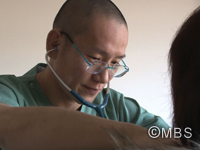
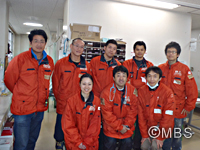
|Length : 24min. |Year : 2014 |
Kesennuma City in Miyagi Prefecture was devastated by the tsunami of the Great East Japan Earthquake. In 2013, two years after the earthquake, the region's only medical institution, Motoyoshi Hospital, finally began admitting patients.
The man who rebuilt this hospital is Dr. Minoru Kawashima. In 2011, the tsunami destroyed the first floor of Motoyoshi hospital and doctors left one after another. Kawashima couldn’t turn his back on the hospital shutdown, so he began commuting to Motoyoshi every weekend to lend aid and support as a volunteer doctor. Half a year after the earthquake, he was appointed as the hospital director and took on the task of restoring the hospital services.
Immediately, Kawashima was confronted with a critical shortage of doctors specializing in obstetrics and pediatrics. Hoping to make Motoyoshi a place where mothers can give birth to their children at ease, he personally receives training once a week at another hospital to open an OB-GYN ward at his Hospital. Kawashima envisions a hospital that offers "comprehensive medical care" including internal medicine, pediatrics, surgery and obstetrics-gynecology.
There is another challenge that Kawashima faces in community medicine - "home care." Motoyoshi has many senior citizens for whom even a visit to the hospital is a difficult ordeal. To Kawashima, to die means to "live until the very last breath." He wants the practice of "home care" to take root, so that one's end of life can come at home, surrounded by family and loved ones. Presently, he has 70 patients who receive medical care at home.
Kawashima's life has taken unusual and diverse turns. As a graduate of an ultra-elite university, he first became a professional boxer and then farmer. He now hopes to “knock out” the region’s medical problems.
Vow of an Atomic Bomb Survivor
DC281352![]()
誓い その時 私は14才 [NBC]
![]()
![]()
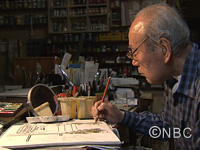
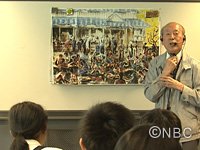
|Length : 24min. |Year : 2013 |
We asked young people in Nagasaki this question: Do you ever think about the atomic bomb?
"It's something from the past", they answered. It reminded us that over sixty years have passed since the atomic bomb dropped on Nagasaki. The event is a distant memory of the past. Even for young people who live in the city where it dropped, the memories are starting to fade.
Hiroshi Matsuzoe is an artist from Nagasaki City. When he was fourteen, he was exposed to the atomic bomb. After retiring from the fire department, he started to depict his memories of the atomic bomb through his paintings, which he made into a kamishibai (pictures on boards that are used for storytelling). Using the kamishibai, he spoke to school children about his experiences, the horrors of nuclear weapons and the value of peace.
When Matsuzoe turned eighty, he was diagnosed with throat cancer. He survived, but his vocal cords were removed and he lost his voice in the surgery. Now he relies on a hole made in his throat to breathe.
Matsuzoe relied on his voice to perform his lifework, recounting atomic bomb experiences. The loss of his voice was extremely unfortunate. After his surgery, he avoided meeting people and stayed home.
Matsuzoe started to paint another kamishibai while he stayed at home. He depicted the experiences of his classmates' who died from the atomic bomb. He wanted to ensure their lives would be honored and not forgotten. Matsuzoe wanted to read his new kamishibai to young people again. He battled his feelings of anxiousness to speak in front of people and started to train and rehabilitate his voice using an artificial larynx. As he worked on his project, another trace of cancer was detected in his lungs.
The average age of atomic bomb survivors is seventy-eight. Many have complicated health issues but are using the little time they have left to tell their atomic bomb experiences so that they won't be forgotten. We look at how these survivors live today by following Matsuzoe's experience.
 A Passionate Challenger | The Queen of Lighting
A Passionate Challenger | The Queen of Lighting
DC281351![]()
情熱大陸 | 照明デザイナー 石井幹子 [MBS]
![]()
![]()
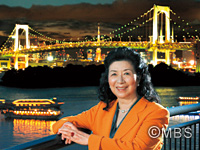
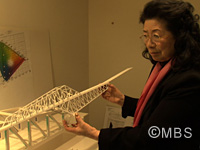
|Length : 24min. |Year : 2013 |
Motoko Ishii has been leading the lighting design industry nearly over half a century. Her innovative designs have earned her the well-deserved reputation as "Japan's Queen of Lighting." In addition to the illumination of the landmark Tokyo Tower and the Osaka Expo '70, Ishii has worked her magic with lights on world stage in architecture and the arts, in projects like Shanghai's World Financial Center, a hotel in Singapore, and light performance events in Germany and Paris. What drives her to always be at the forefront is the desire to "do something new." In that pursuit, she is always on the go, traveling to international illumination trade fairs in Europe, or collaborating with her daughter, Akari-Lisa, who is a lighting designer in her own right.
This program goes behind-the-scenes and follows her work on illuminating the Tokyo Gate Bridge which opened in February 2012. The project had two very strict regulatory limitations on light positioning and brightness. It was an arduous effort that took eight years from planning to fruition and we see Ishii, the consummate lighting designer, passionately and completely in her element.
Creating a New World: The Maverick of the IT World
DC281250![]()
情熱大陸 | デジタルクリエーター猪子寿之 [MBS]
![]()
![]()
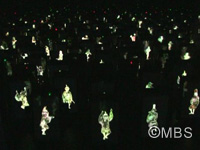
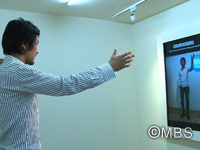
|Length : 24min. |Year : 2012 |
Japan's "soft power" is more than just anime and video games. There is still an enormous amount of cultural resources that remain undeveloped. A pioneer digital creator, Toshiyuki Inoko is brilliantly tapping into these resources. Many call him "Japan's Steve Jobs."
Inoko thinks out of the box and his unique concepts have stirred the curiosity of people from all walks of life. With Japan as his springboard into a new world…he is our guide into the uncharted and limitless digital world. His eyes can already see the shape of the future.
Inoko established an IT venture company, teamLab, in 2001 with friends from college. He conceives various ideas with his exceptional talents. Should they be classified as art or technology? There are no boundaries to his creative style. Take the idea of Japanese letters that turn into 3D images… This one brought home an international award. Other projects include the interior design of a retail store that makes you feel as though you've stepped into a virtual world of video games, and innovative hangers for clothing stores that are the first of its kind. In every genre, Inoko's powerful creations generate excitement and enthusiasm. For Inoko's indispensible team, it is a daily struggle to turn his incredible concepts into tangible works, but each one is dedicated to producing things that are "fun and interesting."
In addition to being a digital creator, Inoko often participates in seminars as a panelist and sometimes gives lectures to university students.. His straightforward manner makes a strong impression on young people. With his unpretentious, unique way of talking, he declares, "I'm just like a fourth-grader." And because he is a grown-up who is still a child at heart, Inoko continues in pursuit of a "joyful world." Here is an intimate look at the uber-cyber creator who challenges the world, armed only with innovative ideas.
Bonds Born Through Football – A year with 2 Coaches
DC281149![]()
ボールが結んだ心の絆 ~熱血サッカーコーチの1年に密着 [KHB]
![]()
![]()
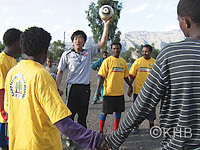
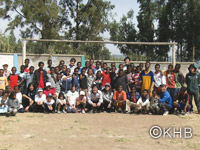
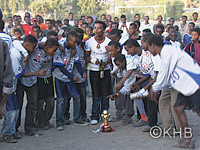
|Length : 30min. |Year : 2011 |
Vegalta Sendai makes its home in Sendai, a city known for its greenery. In the subdivisions of this club, there are 2 young coaches who coach children in hopes of cultivating them into professional football players. ( These 2 coaches are Coach Kazunori Inoue and Coach Naoto Fukuda of the Sendai Vegalta Player Development Division. ) In January of 2011, these 2 coaches took a trip to coach football to children in Ethiopia. With a population of 80 million, football is very popular in Ethiopia. When you ask the children what they want to be when they grow up, they answer almost in unison that they want to be pro-football players. The football field of the elementary school the coaches visit first is laden with huge rocks making it a dangerous environment to play in. Their footballs are made from old clothes being stitched together so when the children get the chance to play with a real football, they all run after it excitedly. This is the only way they know how to play football as they imitate what they see on TV. So it was big news when they heard football coaches would be coming from Japan as they do not yet know how an actual football practice is carried out. Their bright eyes fixed on the coaches fill with expectations and hopes. The coaches struggle at communicating to the children drills that can be done with a few footballs to many people like dribbling and passing. At first the confusion the children felt was evident. However, the children gradually began to feed off the coaches' enthusiasm. The joy of playing football with your friends turned the expressions on the children's faces to smiles. The 2 coaches feel the bonds created from football as they head for home. However, soon after arriving in Japan, they are met by a great earthquake and a giant tsunami in their home towns. The Japanese children whose footballs and football shoes were washed away by the tsunami hope for the day they can play football again with all of their friends. The coaches become busy bringing aid to the disaster-stricken areas in hopes of giving the children a chance to play football as soon as possible. In the midst of all this, they receive a message from the children of Ethiopia filled with concern for the disaster and gratitude for what the coaches taught them.















